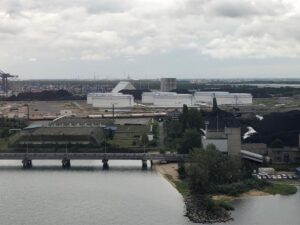What goes on in Poland on the 8th of April.
PEI: Smart grid is the way to modernize Poland’s power system
Implementation of the Paris Agreement, fulfillment of the EU requirements with regard to CO2 reduction, participation of renewables in energy production and utilization of the industry opportunities related to low-emissions economy are the best arguments for developing renewable energy sources in Poland. These goals will be achievable only if Poland is able to use technologies that will make the Polish Power System more flexible. Smart grid will speed up the evolution of Poland’s energy mix and accelerate innovation of our energy industry – claim the authors of the report „Balancing RES in the power system” from the Polish Economic Institute.
Evolution of the Polish Power System
„When thinking about the evolution of the Polish Power System we have to take into consideration climate policy requirements, industrial opportunities, as well as market trends. The cost of power generation from renewable energy sources (RES) is increasingly more often lower than that of energy produced from gas and coal. Considering these factors, some scenarios for developing Poland’s power system say that already by 2030 the participation of renewable energy sources could constitute 50% of the energy mix. The development of technologies that allow to optimize efficiency and flexibility of the power system is an opportunity that we need to seize to adapt Poland’s power system to the requirements of the future,” says Aleksander Szpor, head of the energy and climate team at the Polish Economic Institute.
Smart grid’s role in developing Poland’s power system
Efficient management of the existing power system that is based on conventional energy sources is challenging in the face of the increasing volume of renewable energy. The smart grid technology, i.e. intelligent transmission networks, seems to be necessary to improve the system’s efficiency. Smart grid’s main benefits include: improvement of supply security and reliability of the power system, the ability to notify consumers about the current energy price, development of distributed generation sources and their connections to the power grid, as well as improvement of awareness among consumers with regard to issues like optimization of power consumption. Smart grid also allows to remotely detect malfunctions and fix any issues on the spot.
Balancing renewable energy
Today the most important technologies for energy storage are pumped-storage hydroelectricity, compressed-air energy storage (CAES) and batteries (electrochemical cells). Hydrogen is also an interesting option for short- and long-term attempts at making the grid more flexible. Increasing the flexibility of conventional sources is another factor that allows better balancing of renewable energy. Another solution is the usage of cogeneration facilities. Such flexible and RES-powered combined heat and power installations could generate from 4 to 8 GW of power before 2030. RES integration can also be made easier thanks to the development of cross border cooperation with regard to power transmission and grid modernization. The introduction of proper solutions is also important on the demand side through the development of e-mobility and the Advanced Meter Infrastructure, which necessitates the replacement of at least 80% of end-users’ legacy meters with smart meters. According to our simulations the introduction of 600 thousand e-cars would put the power system under significant strain. The demand for power should be stimulated in a way that encourages e-cars users to not load the vehicles at peak demand hours, but rather during the nighttime demand dips. This will allow to flatten the consumption curve during the day and thus improve the quality and security of the power system.








